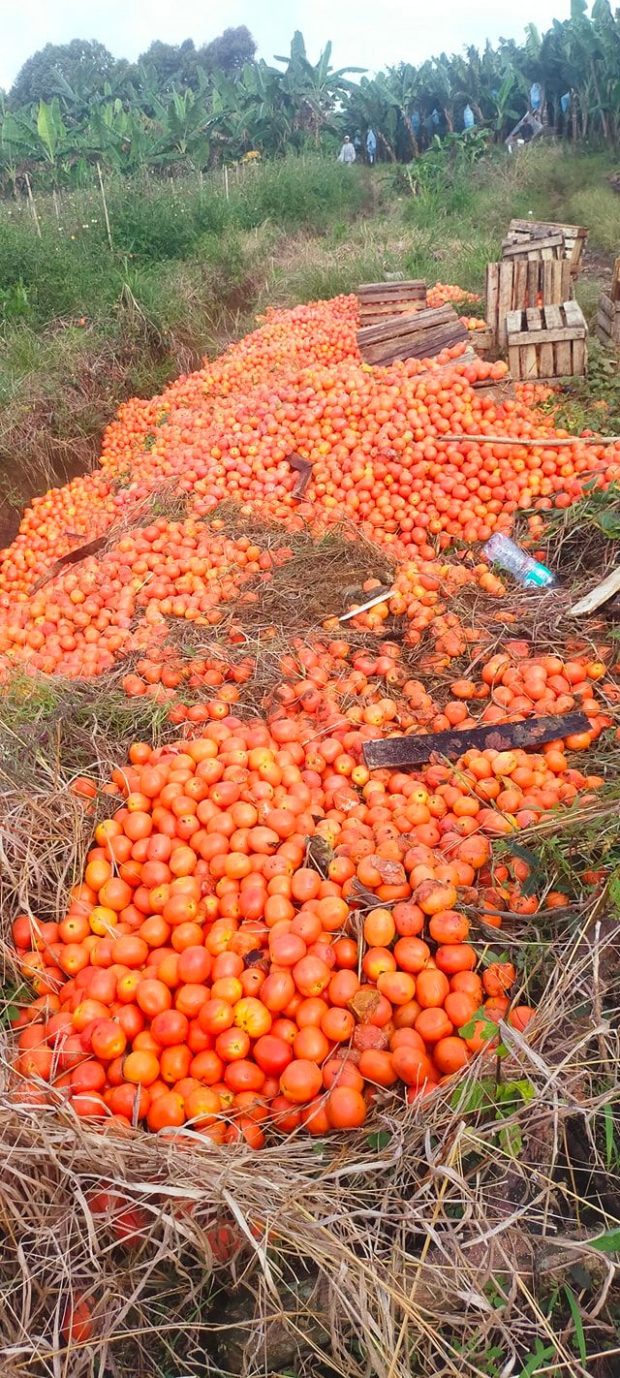DA in Northern Mindanao urges farmers to tap gov’t trading support
CAGAYAN DE ORO CITY—The Department of Agriculture (DA) in Northern Mindanao has urged farmers in the region to avail of the government’s support to ensure that their produce is brought into the market and bought at a gainful price.
According to DA-10 regional director Carlene Collado, they are currently providing logistics support to farmers in marketing their produce through the Kadiwa ni Ani at Kita program through the local governments, farmer cooperatives, and associations.
Collado made the appeal following a viral post on social media about a farmer in Lantapan town, Bukidnon who dumped some 56 boxes of ripe tomatoes on his farm after it was offered a very low price by consolidators in Cagayan de Oro City.
Farmer Lod Guinayon brought the 1,400 kilos of tomatoes to Cagayan de Oro from Barangay Alanib in Lantapan last July 5, hoping it can fetch P300 per kilo. But the bulk buyers at the Bulua public market here offered only P100 to P150 per kilo for his tomatoes which were already ripe. In disgust, Guinayon brought these back to Alanib.
Collado said the price of P300 per kilo is offered for “unripe and good quality” tomatoes.
Lantapan municipal agriculture officer Neptali Ambos said that Guinayon was not able to dispose of his produce right away, causing it to ripen.
Ambos added that Guinayon could have availed of the government’s free transport and marketing of products through the DA’s Kadiwa program, which serves as a direct link among farmers, fisherfolk, and consumers.
The Kadiwa also aims to make farm produce easily accessible and affordable to consumers.
In order to prevent a repeat of the incident, Collado said DA-10 has worked out a marketing agreement with Lantapan Vegetable Farmers Multipurpose Cooperative to assist farmers to have a tie-up with an agricultural marketing firm that offers a better price.
To ensure that there is no wastage of tomatoes, Ambos said the farmers would also need trading posts and processing centers.
Ambos noted that for the April-July planting season, they expect to harvest 50 tons of tomatoes.
READ: Tons of tomatoes left to rot due to lack of buyers in Ifugao, Nueva Vizcaya
